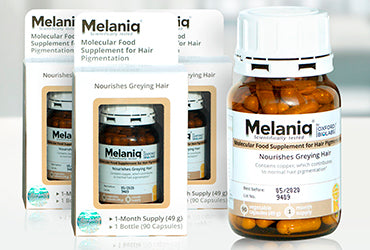Even in the 21st century, people with albinism still face a multitude of problems like inequality and discrimination. In Africa, particularly sub-Saharan Africa, people with albinism are persecuted, ridiculed, and sometimes killed. In some communities, superstitious beliefs are so strong that innocent children are
hacked up with machetes because it is believed that their limbs have magical powers. This condition remains misunderstood, and that is why the United Nations General Assembly proclaimed June 13 as International Albinism Awareness Day.
What is albinism and what causes it?
Albinism is a rare, genetic disorder that causes partial or complete lack of pigmentation (
melanin) in the skin, hair and eyes. This results in a vulnerability to sunlight, which may lead to sunburn and sometimes skin cancer. It affects people from all around the world regardless of race, ethnicity, or gender.
It’s caused by a recessive gene, meaning that usually both parents are carriers and pass the gene to their children. Genetic mutations inhibit the production of pigment in melanocytes, the cells responsible for pigmentation.
There are five main types of albinism, the most common are oculocutaneous type 1 (OCA1) and type 2 (OCA2). Oculocutaneous albinism affects the eyes (oculo-) and skin (-cutaneous) as well as hair.
What does a person with albinism look like?
People with OCA1 have very white, almost translucent hair, with light or reddish eyes. Their skin may be pink or pale. Those with OCA2 often have more colour in their skin, hair and eyes. Hair can be light, reddish or brown, and their eyes can range from blue to brown.
In some cases, as a person with albinism ages, their skin, hair and eyes may become darker due to an increase in melanin production.
What other symptoms are associated with albinism?
Apart from an acute susceptibility to sunlight, the most common problems are vision-related. Because the development of the visual system is dependent on melanin, people with albinism have poor vision due to overlapping visual pathways, retinal issues, and light scattering.
Eye conditions that are common include irregular, rapid eye movements, lazy eye, and underdeveloped optic nerves.
Apart from sun sensitivity and eye problems, people with albinism are otherwise healthy and develop normally. Their mental development and IQ are unaffected, but may be hindered by poor vision and social inequality.
Can it be treated or prevented?
There is not a way to counter-act albinism. Quality of life can be improved with lifestyle changes like wearing sunscreen, sunglasses, and clothing that covers the skin. Visual aids, prescription glasses or contact lenses, and surgery can help, along with other coping skills.
Prevention through genetic testing prior to childbirth is not a viable, cost-effective option, unless a family member or relative has albinism. In these cases a geneticist can assess the chances of having children with albinism.
Global activism and awareness
Those suffering from albinism prefer to be called “people with albinism” rather than “albino”, which is considered derogatory in the albinism community.
They are not ghosts, evil spirits, or a result of a family curse. They are people that can lead normal, happy lives, and with help from activists and global awareness, the social stigma and discrimination can become a thing of the past.
Melaniq® - Supports natural hair colour
Melaniq® Food Supplement for Hair Pigmentation is not intended for people with albinism. It can help people experiencing greying hair, and those who would like to prevent greying hair. Melaniq® is a unique,
naturally-based formula that combines copper, L-tyrosine, and other minerals and vitamins, essential for maintaining natural hair colour. Do you have grey hair?
Try Melaniq®


























